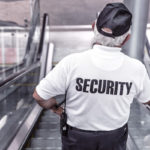Security Measures For Large Events
With the big game going down this Sunday, security for large-scale events is on our minds. Unfortunately, heavily publicized events that draw substantial attendance and large crowds tend to be prime targets for attacks and incidents. Luckily, proper security measures can prevent dangerous incidents from escalating further, or, ideally, from even happening at all. Here are a few things to keep in mind when it comes to event security.
- Security Posture
It is crucial to make security efforts visible. Bag checks, vehicle-free zones, and uniformed personnel make all the difference. - Constant Vigilance
Security personnel should be prepared to handle the crowd beforehand and screen every guest that enters, but security measures should remain in place throughout the entire event. It may be feasible to reduce some personnel when a majority of attendees have entered, however, no one should be able to enter the facility at any time without going through the same screening as everyone else. Once the event is underway, it makes it easier for potential attackers to move without being noticed. - Outdoor Security
If you uphold strong indoor security, an attacker may decide to carry out his actions outside. This makes it vital to maintain additional security measures around the perimeter and beyond (ex. mass transit connections, tailgate areas, merchandise locations). Typically, perpetrators will target large, dense gatherings of people. Spreading out locations to disperse crowds with ample security personnel makes it difficult for attackers to select a prime target. - Layers Of Security
As you may already tell, several layers of security are crucial. For example, your first layer of security may be traffic control personnel, who limit vehicle access to the venue and can watch for suspicious activity and individuals. Another layer may be personnel looking for potential criminal behavior in parking lots or directly outside the venue. Next would be the bag checks, magnetometers, and pat-downs to ensure prohibited items stay out of the venue. On the inside, you want to monitor the activities and prepare for the appropriate response, such as getting individuals to exits safely and getting emergency responders to the scene of an incident quickly. - Communication
Keep attendees informed about prohibited items and any other policies and rules before the event. These communications can be distributed with the help of ticketing outlets and public media. Getting this information out beforehand will help security lines and bag checks move smoothly and quickly, decreasing traffic and delays at the entrances. - Offsite Security Command Center
It makes sense to maintain a security command center onsite so that it is easy for people to find them if necessary. However, perpetrators know they can inflict more damage if they take down the command and communications center first. To combat this, while still maintaining an office within the venue, many facilities are moving the main command center offsite. By doing so, should an incident occur and the onsite center is compromised, security will still have eyes and means of communicating with the security personnel on site and still coordinate an appropriate response.
Tragic events over the years have forced us to reevaluate and tighten our security measures to keep the public safe. Now more than ever, security and emergency response personnel must work together to prevent and respond to major incidents. As an attendee, remember to be aware of your surroundings, and if you see something, say something.
For affordable, quality security systems, visit SecurityCamExpert.com or call 888-203-6294! We are happy to provide you with a free quote, schedule a site survey, or assist you with any questions you may have. You may also connect with us on Facebook, Google+, Twitter, LinkedIn, and Pinterest.
